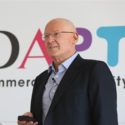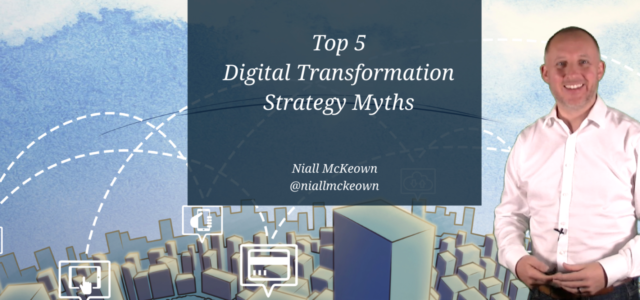The time is ripe for the creation of a People Analytics Association. Why? Because there’s almost no point writing this. For over a decade, we’ve promoted the power of People Analytics through blogs, speeches and consultation; but today this blog, along with your own carefully crafted People Analytics articles, will likely be lost in a veritable sea of content – some exceptional, some terrible (the latter of which represents People Analytics as less a science, and more an overly simplistic magic pill for all manner of objectives).
This vast ether is significantly driven by ‘experts’ who grow in number by the day, and old-time statisticians who are mid 1970’s alumni – an ether so large that it almost ensures that the blogs of genuine People Analytics experts are swallowed up amongst the 134 million results that Google now returns. Make no mistake: it’s now difficult, if not impossible, to be heard. As competition rapidly increases, you’ve never been in more need of a defining difference. And as the noise in the industry gets ever louder, it can very much feel as though the average quality of People Analytics practice is dwindling.
A key question: why has this happened?
Snake Oil, Smoke and Mirrors
The growth of People Analytics, and its associated “experts”, has been nothing short of explosive. We need only look to the continuing surge in delegates to people analytics conferences to appreciate this, as well as the growing number of journals in the field, where 232 papers were published as of 2014, rapidly increasing to 473 papers as of 2016, a mere two years later. Yet often through no ill will, many of those writing about this field are lacking in any solid first-hand experience. But this goes under the radar, and worse still, readers who seek informative insight and guidance take these words as gospel, while interest in People Analytics is rising and rising. While the responsibility of due diligence should ultimately lie with the consumers of these services and this information, all too often companies skip any form of assessing credibility. What’s more, those who do seek out information from well-known information sources can often uncover material in the form of articles, or even conference sessions, that have been influenced by misleading root sources. This has never been more relevant an issue, as we all live in the era of ‘fake news’. And with no yard stick to measure such material against, non-educated users are left completely in the dark.
An infinite pool of analysts, a finite pot of cash
Professional, genuine People Analytics is inherently valuable – indeed it has and continues to deliver staggering ROI and promises capabilities on everything from slashing supply chain complexity and costs, to crafting marketing messages that better resonate with target markets. This in and of itself has led to a steadily growing cash pot – a cash pot that is alluring to many (and growing).
Money – It Makes the World Go Round
How are people currently generating income from people analytics?
Those who operate in the People Analytics sphere can be divided into three distinct sectors – those who create content, those who consult, and those involved in the creation of software products. Let’s dig into the landscape between these groups…
1. Content Creators and Publishers – Champions for People Analytics
Content creators and publishers push the industry onwards – these are the people who write about, promote and run conferences in People Analytics. Often, many of those found in this realm are personally unable to “do” People Analytics themselves (or, at least, may be out of practice); however it’s a worthy point of note to say that they play a vital role in the industry – providing channels of advancement to those who can.
2. The People Analytics Consultant– An Endangered Species Falling Prey to Product Developers?
Consultants are under threat. Software products vendors like SuccessFactors increasingly offer mandatory free consultancy as part of their sales process, typically during the pre-sales stage – ultimately this means one thing: The People Analytics Consultant is an endangered species, looking set to die out further as the world turns to be product focused, rather than consultancy focused, and it appears the lines are blurring between ‘product’ and ‘service’.
We now find ourselves exactly where the Executive Coaching market was ten years ago – where everyone became an expert, followed swiftly by everyone being teachers of thoughts and strategies not of their own, but of other people’s (with some who are regurgitating content with their own spin, making it inaccurate and ineffective in the process).
People Analytics is still in relative infancy, with expansive opportunity for innovation, and yet all too many delegates to PA conferences, and trainees on private PA courses, expect to be spoon-fed practical experience.
A further problem that plagues consultants is the often distinct lack of “doing” experience – they advise and guide, without having had the need to hold the skills to build a People Analytics product. Whilst this structure was just fine and dandy until today’s increasingly competitive world arrived, now, consultants must evolve. Now, they must now “do”.
3. Product Developers – Meet Those Who are the Future of People Analytics
Product developers should be thought of as the “doers” of People Analytics – the ones who are there, on the “shop floor” designing, developing and building the data-analysing, number-crunching software that provides insight and that drives business decisions and commercial direction. These are the people whose economic contribution is driving demand for People Analytics. It is these individuals and teams who are the future of People Analytics, yet there are snake oil salesmen who undoubtedly exist in this area too, and they’re doing no favours for the industry.
The Trough of Disillusionment and the role of the Consumer
Gartner’s theory on Hype Cycles illustrates, perfectly, the current issue with People Analytics. As interest has grown, so too has misinformation and faux experts; increasing numbers of People Analytics services lack any concrete basis in the field – yet their products sell well, as buyers are equally as uneducated and disillusioned. How successful these products are relies not on the effectiveness of their analytics capabilities, but instead on fast-talking sales people and shiny marketing material. Unfortunately, consumers are too often impressed by slick graphics and nice looking charts – they too, must raise their game.
The upshot of this is that these basic, mis-sold or ill-considered products damage the reputation of the industry; they don’t deliver on the promise of people analytics, and it is here, where all changes plunge towards the Trough of Disillusionment.
One solution to this, in some ways, is already taking place – with users beginning to educate themselves and undertake their own analytics. Yet the journeys that such users are undergoing represents a staggering overkill – akin to embarking on a medical degree to avoid a misdiagnosis during a lifetime. A solution this may be, but one that’s sustainable or suitable? It seems not. Whilst this desire for information and education may never wane, organisations need a solid resource on which they can rely – and a clear marker of quality of when it comes to the providers that they consider.
Taking a look at two well-placed case studies…
One vendor claims to provide a “predictive analytics suite” – when asked what was under the hood, they refused to explain claiming that it was proprietary. Our theory? We believe that their truthful answer would have been a simple, flat reporting engine that prints the line “predictive analytics output”. Not for one second do we believe that this company is using machine learning or any kind of generalized linear modelling.
Another vendor offers psychometric testing for selecting job applicants – yet the vendor refuses to supply reliability and validity data when requested, and cannot explain how the same test can be effective in radically different work environments and roles. For example, is it likely that the same test without modification can be used to select accountants, pilots and salespeople? Again, an avoidance of an answer seems to point to a further snake oil vendor falsely capitalising upon People Analytics.
It’s a sad state of affairs, and the crudeness of much People Analytics education could be partly to blame…
Much of the content being produced in the world of People Analytics remains ‘byte-size’ focused – webinars, podcasts, videos and blogs that are designed to be five minutes short and to provide the basic building blocks of People Analytics. These five minute affairs are no good to anyone, providing no depth of knowledge for those who are the future of this industry. The content being produced en-masse should delve into the writing of programs, the languages that can be used and how databases can be integrated with people information. Right now, we have a landscape where content is created to make someone a jack of all trades and a master of none. We need direction.
The People Analytics field has changed. And not for the better. Evolution is needed if misguidance and misunderstandings aren’t to become ever more wide-spread. But how can this be overcome?
In this way, we can learn much from the world of medicine – a realm that very much began with the good and the bad – the evidence-based practitioners, and those armed with only hocus pocus and snake oil. The learned, educated and genuinely knowledgeable would go on to define an industry – guided and progressed by a medical association that defined training, certifications and a code of ethics. In the modern age, and in an industry far closer to People Analytics, we can take The CIPD as a prime example of a professional body which does the same thing, outlining competencies, certifications and ethics for HR professionalism.
Ultimately, People Analytics must become a profession, with a professional body that oversees its direction, ethics, competencies and standards.
The Vision and Purpose of a People Analytics Professional Body
The Purpose
A People Analytics Association would promote both the science and art of People Analytics, and the note of People Analytics being an art form is an important one – as this field is just as reliant on storytelling to drive decisions and actions as it is on data and analysis. It would be dedicated to championing ways of working that could progress the field, whilst delivering leaps forward for the businesses and organisations that are reliant on People Analytics for their own progression.
The Vision
By defining clear ethics, competencies and standards we place everyone on the same page – analysts, people analytics organisations and the stakeholders for whom People Analytics is to benefit. In this way, a professional body would help a community of people analysts in growing, progressing and advancing, not only the field itself, but each individual’s knowledge, skillsets and capabilities. The note of People Analytics being an art form is an important one – as this field is just as reliant on storytelling to drive decisions and actions as it is on data and analysis; the role of the professional body, however, would be to guide and inform these techniques and offer a counterfoil to the snake-oil salesmen existing in the industry today.
In the simplest sense, the vision is to define and symbolise a global benchmark for People Analytics excellence.
Ethics, competencies and standards – Defining the industry
Ethics: Whilst there is regulation and legislation that provides for robust protection of data (such as The Data Protection Act), and bodies such as the Information Commissioner Office that is responsible for ensuring the Act’s fulfilment, People Analytics is unique – and all things considered, it’s astounding to think that People Analytics hasn’t a professional body specifically to govern its ethics. After all, the modern world has never been more concerned with the ways in which data is treated, and when it comes to behavioural data, there may not be a more sensitive area of analytics. In this way, a professional body would define and ensure implementation of ethics guidelines that answer the uniqueness of People Analytics – ensuring the insights the field can provide, equally protect the people from which they’re derived. What’s more, the snake oil salesmen would be clearer to identify by Lay Men – whilst conversely those with a membership to a dedicated People Analytics body could be better guided and significantly more trusted by the public at large.
Competencies: When done thoroughly, competencies improve clarity about performance – founding a crystal clear indicator of business, analyst or organisation skill, accuracy and quality. This is critical in an industry that’s becoming weighed down with the faux experts that I’ve outlined as being increasingly commonplace. An official body would define competency frameworks, developed from extensive research, testing, and understanding as to the potential strengths and weaknesses with adopting such an approach; such a body would also advise and guide on effectively developing and implementing competency frameworks in businesses involved in People Analytics. Competencies could also be capable of defining a distinguishable demand generation capability, which would lend some legitimacy to the vendors, whilst also protecting the role of the consultant.
Standards: Accountability, it’s distinctly lacking in People Analytics. Standards set expectations, define professionalism and assist those in the industry in raising their own game to meet these standards. Such standards could provide cast-iron expectancies as they relate to the behaviours, skills, knowledge, social responsibility and a dedication to professional development, by those in the industry. And standards would be committed to ensuring that ‘meaningful comparisons’ and benchmarks are set and met in a way not really possible today.
People. It’s a focus that shouldn’t be lost or lumped in
There are those who would argue that People Analytics should be folded into a more general professional body, and whilst people analytics techniques are similar to financial and marketing analytics, there is one key difference: there are human consequences to People Analytics (thank you to Bart Voorn for making this point so clear on this interview).
People Analytics errors therefore require a deep knowledge of people risk management, organisational change management, and organisational psychology not required in other analytics disciplines.
All of which serves to underline and emphasise my argument that People Analytics today requires its own professional body.
Co-authored with Mark Lawrence
Article by channel:
Everything you need to know about Digital Transformation
The best articles, news and events direct to your inbox
Read more articles tagged: Featured, People Analytics










